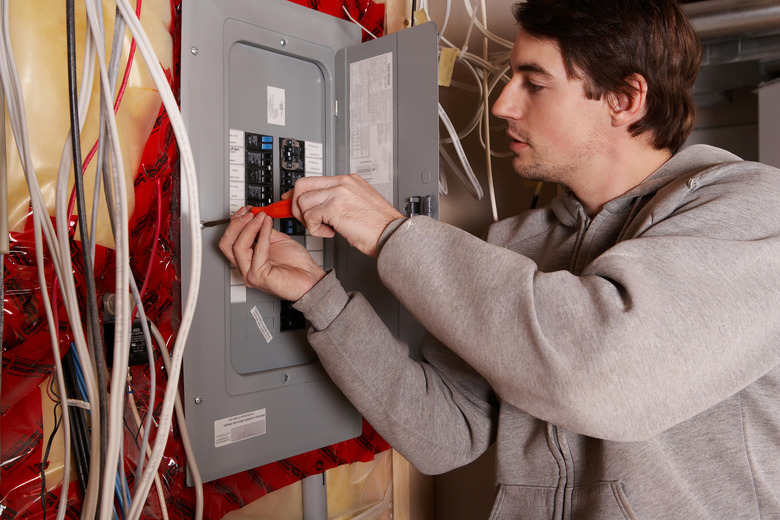How To Increase 208V To 230V
A common low-voltage three-phase power supply operates at a phase-to-ground voltage of 120 volts with a phase-to-phase voltage of 208 volts. Many major household appliances require a 230-volt supply. If you connect them to a 208-volt supply, they will not operate properly. Depending on the type of appliance, it may run at the reduced voltage and a reduced current, delivering about 20 percent less power. If it needs full power to start, it won't operate at all. It may also run at the reduced voltage but with 10 percent more current. In that case, it will overheat and suffer a reduced life. You can easily step up the voltage to the required level using an inexpensive buck-boost transformer and avoid such problems.
Step 1
Check the transformer nameplate for the primary and secondary currents. Make sure the power cable is sized to carry the rated current of the transformer. Choose a cable at least AWG #14 for currents up to 15 amps and a run up to 50 feet. Choose AWG #12 for up to 15 amps and longer runs. Choose AWG #10 cable up to 30 amps, AWG #8 up to 40 amps and AWG #6 up to 55 amps. Check that the breaker and disconnect switch are rated for the current that the cable can carry. Make sure that the transformer nameplate power is sufficient to supply the load that you are connecting.
Step 2
Mount the transformer near the load. For a transformer larger than 3 KVA, stand it on the floor near the wall. For a smaller transformer, mount it on the wall using the screw slots in the feet. If the transformer is not pre-connected in a 208/230 volt configuration, connect the terminals as per the wiring diagram that comes with the transformer. Cut a suitable length of the power cable and strip off the insulation to get the wires for the connection. Mount the disconnect switch on the wall at a height of about 4 feet, near the transformer on the 230-volt side.
Step 3
Use the multimeter to check the voltage at the terminals of the 208-volt two-pole breaker to make sure it is 208 volts. Switch off the power. Cut a length of power cable for the connection from the breaker to the transformer. Connect one end of the cut power cable to the 208-volt breaker, run it to the transformer and connect it to the 208-volt terminals of the transformer. Using another length of cable, connect the 230-volt terminals of the transformer to the disconnect switch. Use a third length of cable to connect the disconnect switch to the load.
Step 4
Open the disconnect switch. Switch on the power. Use the multimeter to measure the voltage at the transformer side of the disconnect switch to make sure the voltage is 230 volts. Close the disconnect switch and switch on the load to test operation.
Things Needed
- 230 volt buck-boost transformer
- 240 volt power cable
- Two-pole breaker
- Disconnect switch
- Multimeter
Cite This Article
MLA
Markgraf, Bert. "How To Increase 208V To 230V" sciencing.com, https://www.sciencing.com/increase-208v-230v-12173175/. 24 April 2017.
APA
Markgraf, Bert. (2017, April 24). How To Increase 208V To 230V. sciencing.com. Retrieved from https://www.sciencing.com/increase-208v-230v-12173175/
Chicago
Markgraf, Bert. How To Increase 208V To 230V last modified March 24, 2022. https://www.sciencing.com/increase-208v-230v-12173175/
